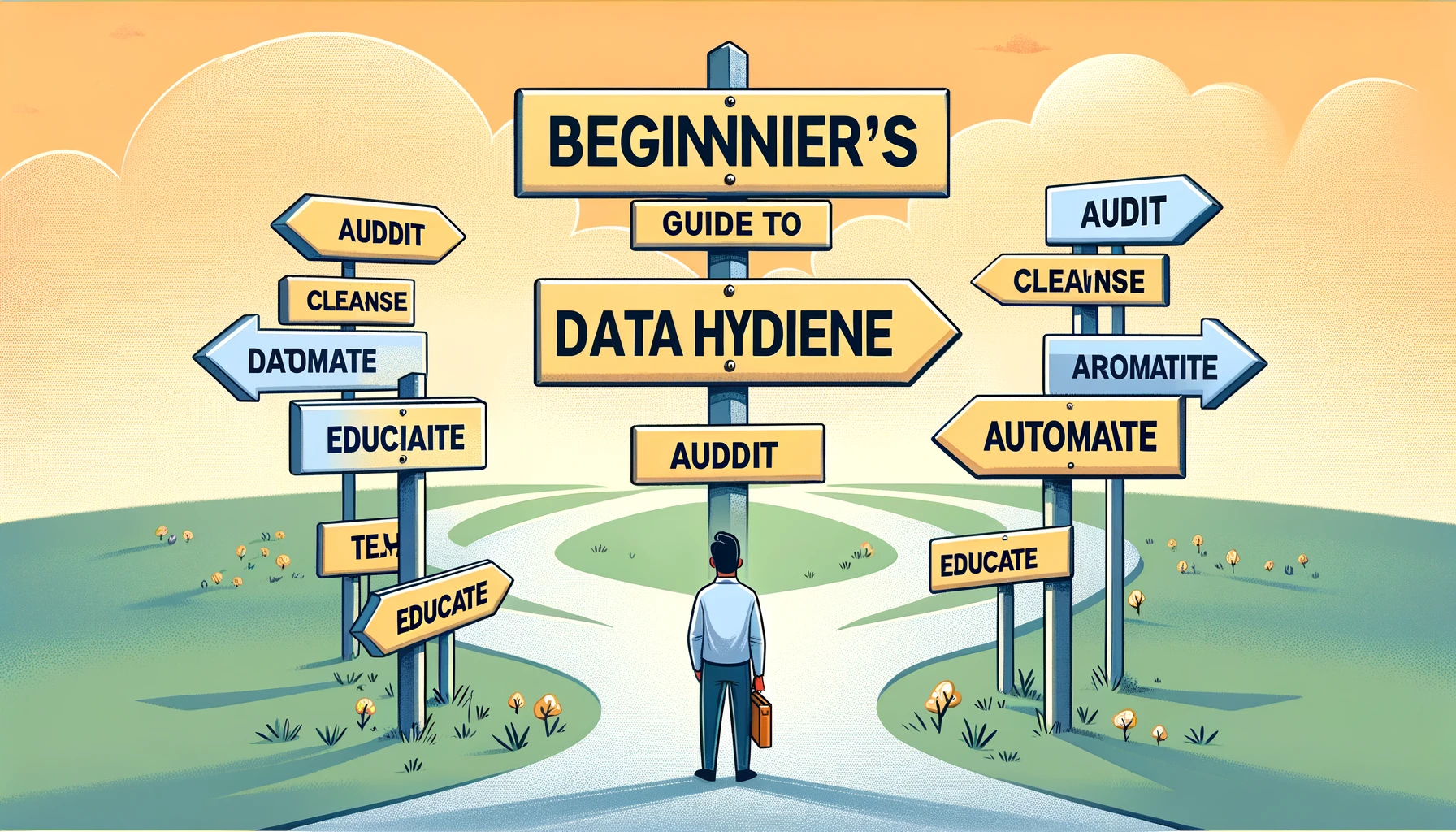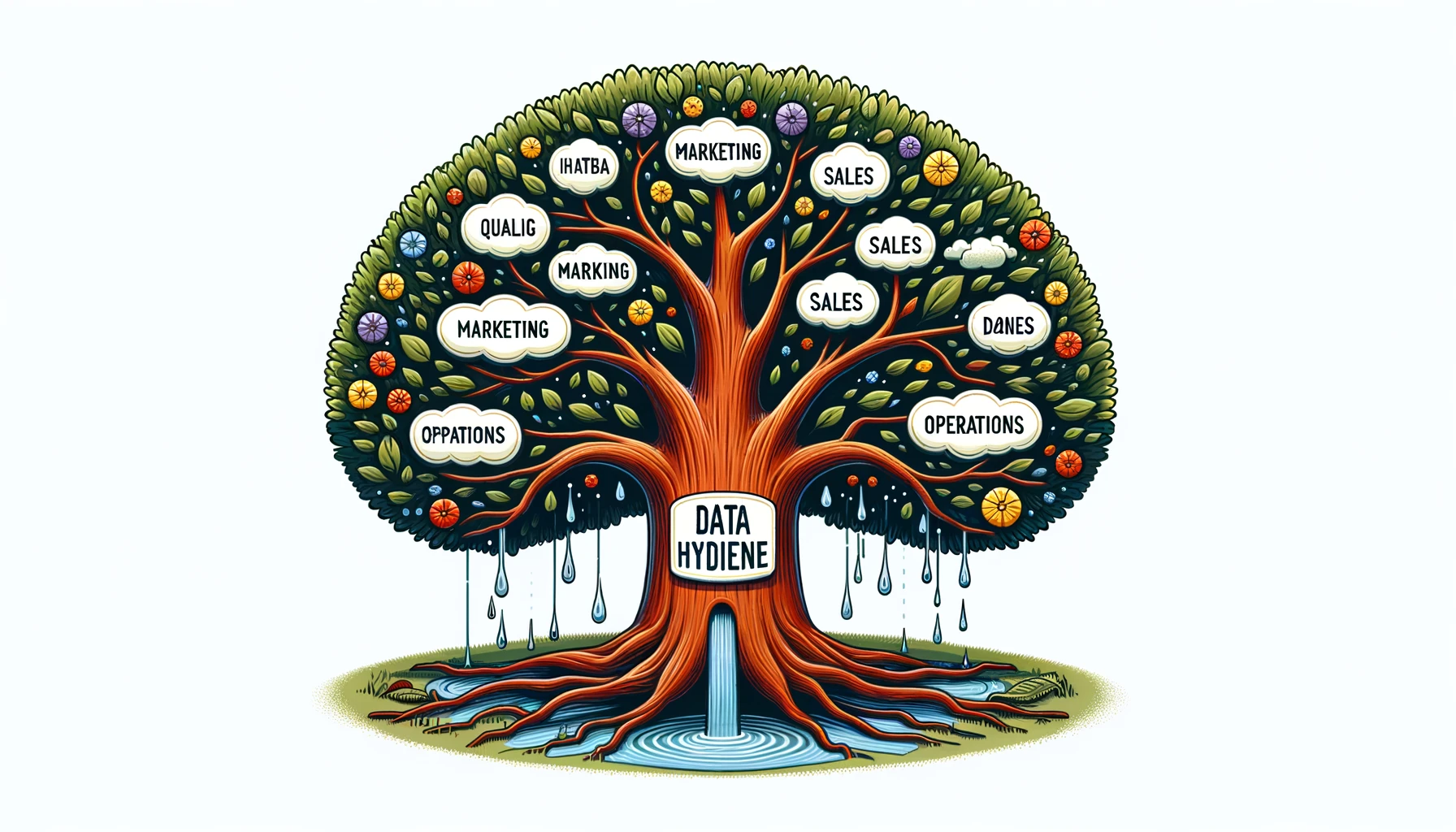Data Hygiene Essentials: Elevate Your Data Quality for Success
Unlock the secrets to pristine data with our guide on data hygiene, ensuring accuracy and boosting your business's decision-making process.
Part 1. Data Hygiene Essentials: Elevate Your Data Quality for Success
Part 2. Data Hygiene Services: Elevate Your Data Quality and Compliance
Part 3. Data Hygiene Tools: Enhance Your Data Quality and Accuracy
Part 4. Data Hygiene Best Practices: Elevate Your Data Quality Today
Part 5. What is Data Hygiene: Essential Practices for Data Quality
Understanding Data Hygiene and Its Importance
Ensuring data hygiene is akin to keeping a well-oiled machine running smoothly; it’s about maintaining the quality and reliability of your company’s data. Think of it as a form of data self-care. By regularly cleansing, validating, and updating your information, you safeguard the lifeblood of your organization – its data assets. This practice is critical because high-quality data underpins every strategic decision, boosts operational efficiency, and enhances customer relationships.
Moreover, clean data can significantly uplift your customer management, ensuring that your communications are targeted and effective. In an era where data drives success, investing in data hygiene is not just a best practice; it’s a necessity for staying competitive.
The benefits are clear: with proper data hygiene, businesses see a marked improvement in their business solutions, leading to smarter strategies and better outcomes. Let’s dive into some numbers that showcase the value of data hygiene:
| Metric | Before Implementation | After Implementation | Improvement |
|---|---|---|---|
| Order Processing Time (hours) | 24 |
8 |
-66% |
| Order Error Rate (%) | 11% |
1.5% |
-86.4% |
| Customer Satisfaction Score (out of 10) | 6.5 |
8.7 |
+33.8% |
| Marketing Campaign ROI (%) | 48% |
73% |
+52.1% |
As you can see, the impact is significant across various performance metrics. Incorporating data hygiene into your daily operations is not just a technical necessity, but a strategic boon.

Remember, your data is a reflection of your business. Keep it clean, keep it accurate, and it will serve you well in the long run.
The Impact of Data Hygiene on Business Efficiency
Data hygiene isn’t just about keeping your records tidy; it’s a strategic pillar that bolsters your entire business framework. When data is clean, your human resource management systems work better, your ai tools operate smarter, and your overall workflow is more streamlined. This efficiency translates into cost savings and revenue growth, making data hygiene a critical factor in your company’s success.
Effective data hygiene practices lead to a leaner, more agile organization where decision-makers can rely on data with confidence. It’s the bedrock that supports a robust client management, allowing you to nurture relationships based on accurate insights. Moreover, it paves the way for advanced analytics and AI implementations, as clean data is a prerequisite for any successful digital transformation.
Let’s look at the following table to understand the efficiency gains from maintaining impeccable data hygiene:
| Benefits of AI Tools for Business | Impact on CRM |
|---|---|
| Enhanced Customer Experience | Improved customer satisfaction and loyalty |
| Increased Efficiency | More time for complex tasks |
| Improved Decision Making | Informed business decisions |

Adopting a culture of data hygiene propels your business forward, ensuring that every facet of your operations is informed by reliable and actionable data. It’s a strategic asset that can’t be overlooked in today’s data-driven marketplace.
Key Practices for Achieving Optimal Data Hygiene
Achieving optimal data hygiene hinges on a few cornerstone practices that ensure your data is not just clean, but also primed for strategic use. Crucially, regular audits are your first line of defense, helping you spot inconsistencies and inaccuracies that could skew analytics. Additionally, employing a low code crm can simplify data cleansing, making it accessible for teams without technical expertise.
Another key practice is automating data validation processes, which can significantly reduce human error and save time. It’s about integrating smart systems that continuously check and confirm data accuracy. Also, embracing AI tools for business can elevate your data hygiene, providing advanced algorithms that refine data sets for optimal use.
Remember, these practices are not one-off tasks but part of a continuous cycle of improvement. By prioritizing data hygiene, you’re committing to a culture of excellence that reverberates through all your business operations.

By embedding these practices into your routine, you’re not just cleaning data; you’re fortifying your business against the pitfalls of poor data management and setting the stage for unparalleled growth and efficiency.
Real-World Benefits of Prioritizing Data Cleanliness
Embracing data hygiene can yield tangible benefits that resonate across your entire organization. By prioritizing data cleanliness, you position your company to harness the full potential of its data assets. Imagine reducing the time spent on data-related issues, freeing up resources to focus on growth and innovation. Enhanced data hygiene practices lead to more than just operational efficiency; they foster a culture of data-driven decision-making.
For instance, sales and marketing teams equipped with clean data can tailor their strategies to meet the precise needs of their target audience, leading to a higher conversion rate and increased customer retention. In the financial sector, accurate data is paramount for risk assessment and regulatory compliance, mitigating potential legal and financial repercussions.
Here’s a snapshot of the real-world advantages:
| Step | Description |
|---|---|
| Identify Your Needs | Understand what problems you’re trying to solve. |
| Research and Selection | Choose the right tools that meet your needs and budget. |
| Implementation | Integrate solutions with your systems and set up automated processes. |
| Testing | Test thoroughly before full-scale deployment. |
| Launch and Monitor | Go live and regularly monitor performance. |
| Feedback and Improvement | Be open to feedback and make continuous improvements. |

As an expert in data management, I assure you that the journey toward immaculate data hygiene is well worth the effort. It’s not just about avoiding errors; it’s about creating a foundation for success in the modern business landscape.
Getting Started with Data Hygiene: A Beginner’s Guide
Embarking on the path to pristine data hygiene may seem daunting, but with the right approach, it’s entirely manageable. Begin by assessing the current state of your data. Are there duplicates, inaccuracies, or outdated entries? Once you’ve identified the issues, take action to rectify them. This might involve setting up regular data cleaning schedules or employing automated data cleansing software to streamline the process.
For those just starting, a simple, structured plan can make all the difference. Focus on small, achievable steps that gradually elevate your data quality. This could mean starting with the most critical datasets and expanding your efforts as you gain confidence and expertise.
Consider the following chart as your beginner’s roadmap to data hygiene excellence:
| Step | Description |
|---|---|
| Audit and Assess | Evaluate your data for common issues. |
| Plan and Prioritize | Develop a strategy that addresses your specific data challenges. |
| Cleanse and Correct | Apply tools and processes to improve data quality. |
| Automate and Maintain | Set up automated systems to sustain data cleanliness. |
| Educate and Enforce | Train your team on data hygiene best practices. |

By taking these initial steps, you’ll be well on your way to realizing the myriad benefits that come with high-quality data. Remember, data hygiene is a continuous process, and starting with a solid foundation will serve your business well into the future.
FAQs
What is data hygiene and why is it important?
Data hygiene refers to the practices involved in ensuring the cleanliness, accuracy, and consistency of data over its lifecycle. This is important because clean and accurate data can significantly improve decision making, analytics, and operational processes, while poor data hygiene can lead to incorrect conclusions, inefficiencies, and potential financial losses.
What are some common practices involved in maintaining good data hygiene?
Common practices in data hygiene include regular data cleaning to remove duplicates and correct errors, data validation to ensure accuracy and relevance, data enrichment to enhance data quality, and consistent data updating to keep all records current and useful.
How does poor data hygiene affect business operations?
Poor data hygiene can lead to a variety of problems in business operations, such as ineffective marketing strategies due to incorrect customer information, poor customer service from outdated contact details, financial discrepancies from inaccurate financial data, and overall reduced trust in the data which can hinder data-driven decision-making.
Can you explain the role of data governance in data hygiene?
Data governance plays a critical role in data hygiene by establishing policies, standards, and procedures to manage data effectively. It involves setting up roles and responsibilities, data quality metrics, and protocols for data usage, which collectively ensure that data is maintained at high quality throughout its lifecycle.
What tools or technologies are commonly used to support data hygiene efforts?
There are various tools and technologies used to support data hygiene, including data cleansing software that can detect and correct errors, data integration tools to ensure consistency across different systems, master data management (MDM) systems to maintain a single source of truth, and customer data platforms (CDPs) to consolidate and manage customer data efficiently.




